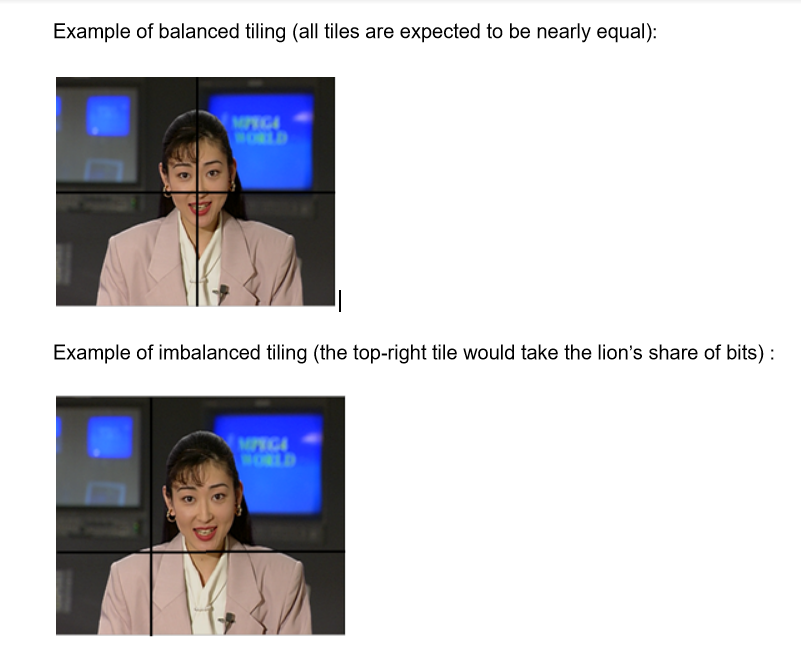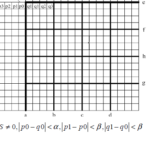Therefore encoder should adapt tiling grid in order to minimize the decoding time. Bitsizes of all tiles are expected to be nearly equal each to other. Otherwise, the decoding process can be imbalanced ( if multiple threads are applied to decode tiles simultaneously then small sized tiles are finished earlier and a heavy tile would get a bottleneck in performance).

Note: in addition to parallelization, there are applications of tiles in 360-videos. In the 360 video a user always sees a part of frame (it’s called viewport), therefore either a decoder could choose and then decode relevant tiles or only relevant tiles are transmitted by the server. The latter variant is better since redundant tiles are not signaled and the bandwidth is not impacted.
In both solutions motion vectors should be confined to reference within tiles, since a part of reference temporal data can be non-available.

23+ years’ programming and theoretical experience in the computer science fields such as video compression, media streaming and artificial intelligence (co-author of several papers and patents).
the author is looking for new job, my resume







Keep up the great work, I read few content on this web site and I conceive that your web site is very interesting and has got sets of superb info .
Thanks for the sensible critique. Me & my neighbor were just preparing to do a little research about this. We got a grab a book from our local library but I think I learned more from this post. I am very glad to see such fantastic info being shared freely out there.
I got what you mean ,saved to bookmarks, very decent site.
Your house is valueble for me. Thanks!…
fantastic points altogether, you just gained a new reader. What would you suggest about your post that you made some days ago? Any positive?
Howdy! Someone in my Myspace group shared this website with us so I came to give it a look. I’m definitely loving the information. I’m bookmarking and will be tweeting this to my followers! Excellent blog and outstanding design.
Great write-up, I am regular visitor of one’s blog, maintain up the nice operate, and It is going to be a regular visitor for a long time.
You made some clear points there. I looked on the internet for the topic and found most individuals will approve with your site.